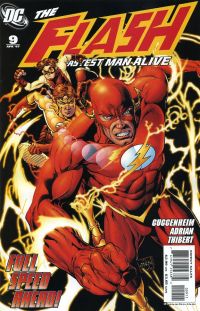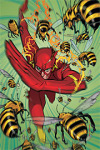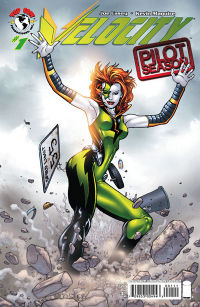 The following is a 1-page excerpt from the upcoming book, The Flash Companion. The full interview appears in the second section of the book. It is printed here with permission of the book’s main author, Keith Dallas.
The following is a 1-page excerpt from the upcoming book, The Flash Companion. The full interview appears in the second section of the book. It is printed here with permission of the book’s main author, Keith Dallas.
The Flash Companion is scheduled for a July 23 release.

Cary Bates: A Scarlet Speedster for the Seventies (excerpt)
By Jack Scott
SCOTT: Was [the serialized storytelling] your decision or a DC editorial decision to change how the Flash stories were being written? I’m wondering if there was a DC mandate to become more like its competitor Marvel Comics.
BATES: I don’t think going the serial route was an official mandate or anything. It just seemed like a natural way to proceed at the time, dictated by the story-lines more than anything else. It first began the last couple of years Julie [Schwartz] was editing the book, in the form of 2-4 issue arcs (like the Golden Glider stories). And with Ross [Andru] and Ernie [Colon], who were more Marvel-oriented guys, the full-on serialized mode pretty much became the status quo. Although I do recall a temporary return to more self-contained stories for awhile, when Mike Barr was editing and Carmine [Infantino] first returned to the book.
SCOTT: Speaking of the co-creator of Barry Allen/Flash, Carmine Infantino returned to pencil the book with issue #296 in 1981. How did it feel to get to work with one of the original creators of the book?
BATES: As I’ve mentioned, when I was growing up, Carmine’s distinctive artwork made a huge impact on me as a fan (and an aspiring amateur artist), so it was a great thrill to finally be working with him on Flash. Carmine and I always got along well, but when I first met him, he had given up his drawing board to serve as DC’s editorial director, although he still laid out most of the covers for other artists. In 1976, after Warners hired Jennette Kahn to take over that job, Carmine went back to penciling, and for a year or two he was working almost exclusively for Jim Warren on books like Creepy and Eerie. Ironically, it was here where our first collaborations took place, as I was writing occasional Warren stories for Louise Jones, who was the editor at the time. I think Carmine and I must have done 3 or 4 one shot horror stories that have long since been forgotten.
SCOTT: How far did you plot out stories? Continue reading →
 Flash Companion author Keith Dallas has appeared on several podcasts in the last few months.
Flash Companion author Keith Dallas has appeared on several podcasts in the last few months.


 CBR recently
CBR recently 